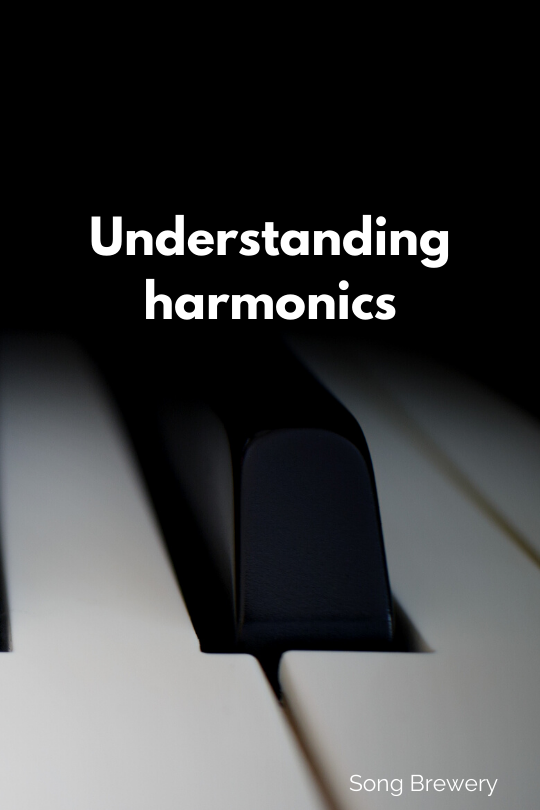As a songwriter and music lover, have you ever wondered, why certain chords sound so good and others don´t? In today´s post I want to lay out the secrets of harmonics! So let´s see:
A chord is a sound composed of three or four notes being played at the same time, also called triads therefor. But what makes certain notes sound in “acc(h)ordance” with one another?
To understand why major and minor chords, which usually consist of primes, thirds and quints sound as pleasing to the ear, we need to take a look at the physical laws that rule sound creation.
Understanding sound creation
When playing a note on a Piano or guitar, you basically hit a string, making it vibrate and that vibration is being transported to the body of the instrument, making it vibrate as well and causing the air around to pick up that vibration. The molecules in the air are being moved so to say, which creates audible sound.
However, naturally a part of those first vibrations (which spread out in the room) is being reflected back to the instrument, and sparking a new vibration again (a little weaker this time though). So the initial strike of the string and the reflected vibration add up to a higher vibration… twice as fast as the first vibration. To get the picture, let us look into this more closely:
Different frequencies adding up
Whether a note sounds high or low is determined by the frequency of the “vibrations per second”. This entity is defined by the entity of Hertz. 1 Hertz stands for “1 oscillation per second”.
If you play out a note on your guitar which vibrates at 60 Hertz for example, that would mean it vibrates 60 times per second. Now, besides the predominant vibration of 60 Hertz, your instrument also reflects back another 60 Hertz. These two vibrations add up to 120 Hertz. So now your actual note vibrates at 60 Hertz and in addition the first reflection in combination with those 60 Hertz creates a frequency of 120 Hertz that mingles with it (but way lower in volume)! This frequency of 120 Hertz is called “first overtone”. It so happens to be the octave. The octave of a note is always twice as high in frequency as the root note.
Ok, now, of course this second frequency is reflected back again…then creating another vibration on the guitar…Another 60 Hertz being added to the equation, thus creating a third frequency of 180 Hertz and so on and so on…
So there are multiple (almost endless) overtones, and they always multiply by the frequency of 60 Hertz. So the overtones would spread out at then 120, 180, 240, 300, 360….Hertz
So far so good.
But why does the quint sound so good when played with the prime note?
To answer that you have to know, that the quint, which is always 7 halftone steps away from the base note (The prime, or root note of a chord), is always in a 3:2 relation to the root note. Meaning that if the root note swing at 60 Hertz, the Quint swings at 90 Hertz…which means the overtones would always multiply by 90 Hertz… resulting in 180 Hertz, 270 Hertz, 360 Hertz etc….
Now, take a look at our Prime note and look at the overtones…do any of the frequencies sound familiar?
Yes, every other overtone of the Prime corresponds with every other overtone of the quint. And that is the reason why these notes sound so good together…They seem to form part of one sound family! Does that make sense?
Hope you liked this quick and easy introduction into harmonics!
If you did, make sure to follow us on Instagram and sign up to our newsletter below to not miss a post! And if you are new to Music Theory, make sure to check back next week for our first free course “Music Theory for Beginners“.


